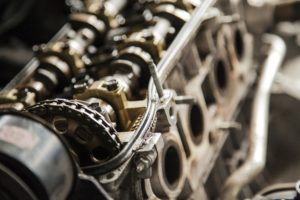 Nitrile o-rings and seals are the most commonly used o-rings and seals on the market. The popularity of the material is due in large part to its excellent mechanical properties. O-ring seals are a necessity, an integral component found in mechanical devices, equipment, and machines. The familiar doughnut-shaped gaskets are used in a variety of static or dynamic applications whose parts require fluids, oils, or lubrication to function. Those composed of nitrile offer greater functionality and versatility than other materials.
Nitrile o-rings and seals are the most commonly used o-rings and seals on the market. The popularity of the material is due in large part to its excellent mechanical properties. O-ring seals are a necessity, an integral component found in mechanical devices, equipment, and machines. The familiar doughnut-shaped gaskets are used in a variety of static or dynamic applications whose parts require fluids, oils, or lubrication to function. Those composed of nitrile offer greater functionality and versatility than other materials.
Though nitrile is not a universal sealant, as a synthetic rubber material it is unusual in that its mechanical properties do make it compatible with petroleum-based oils, greases, lubricants, and fuels, water, and varying types of chemicals and hydraulic fluids.
What is Nitrile?
Nitrile is an elastomeric synthetic rubber compound, a copolymer of acrylonitrile and butadiene, from which it derives its other common names—nitrile butadiene rubber or NBR, acrylonitrile-butadiene rubber, or simply, Buna-N. Its many trade names include Krynac, Nipol, Perbunan, and Europrene.
With further development, the material’s elastic polymer content can be enhanced to be utilized in numerous applications for a wide range of environmental conditions or temperatures, with exceptional chemical compatibility. For example, the amount of acrylonitrile can vary in commercial products from 18% to 50%. This variation in the polymer composition of nitrile will affect the material’s physical and chemical properties. High nitrile content within the polymer provides higher resistance to oils but lowers its flexibility. Meaning, nitrile can offer superior strength and provide more resistance than natural rubber to oils and acids. However, as the resistance to petroleum-based oils and hydrocarbon fuels increases with the increase in NBR content, the flexibility of the material decreases.
Mechanical Properties
As an elastomeric material, nitrile has many mechanical properties that make it well-suited for O-rings and sealing applications. Nitrile holds high fuel and oil resistant properties. It is known for its tensile strength. It combines resistance with a low compression set and high abrasion resistance to make it the seal industry’s most widely used economical elastomer. This also makes it a cost-effective alternative to fluoroelastomers. In addition to its excellent fuel and oil resistant properties, nitrile rubber displays excellent resistance to moisture and water, various alcohols, silicone greases, and hydraulic fluids. Other advantages are its good tear resistance and non-polar solvent resistance.
Advantages and Disadvantages
Because nitrile can be compounded for various applications, it offers stability for service over a temperature range of approximately of -35°F to 250°F (-37°C to 120°C), providing excellent compression set, tear, and abrasion resistance at those working temperatures. With such wide working temperatures, nitrile o-rings and seals are used extensively throughout the automotive and aeronautical industry, and in the manufacture of other products like fuel and oil handling hoses, grommets, and self-sealing fuel tanks. It is such stability at low temperatures that make nitrile ideal for many aeronautical applications.
Though nitrile is a well-suited material with many general purpose applications, it does have its limitations. It is incompatible with different types of fluids, including automotive brake fluid, ketones, phosphate ester hydraulic fluids, or nitro and halogenated hydrocarbons. When compounding, in order to obtain good resistance and functionality for low-temperature applications, it is often necessary to sacrifice some high-temperature resistance and functionality. It also suffers from poor ozone, sunlight, and weather resistance, flame resistance, and cannot be used in high heat applications. Though its ozone and weather resistance can be improved upon through further compounding, it’s worth noting that nitrile o-rings and seals should not be stored near electric motors or other ozone-generating equipment.
Nitrile compounds are superior to most elastomers, offering superior strength and more resistance than any natural rubber to oils and acids. They perform well and are compatible with petroleum-based oils and fuels, vegetable oils, silicone oils and greases, aliphatic hydrocarbons, ethylene glycol, dilute acids, and water to temperatures up to 212ºF (100ºC). It is incompatible with brake fluids, ketones, ethers, and phosphate ester hydraulic fluids, aromatic and chlorinated hydrocarbons, strong acids, and adversely affected by ozone, weathering, and sunlight.


